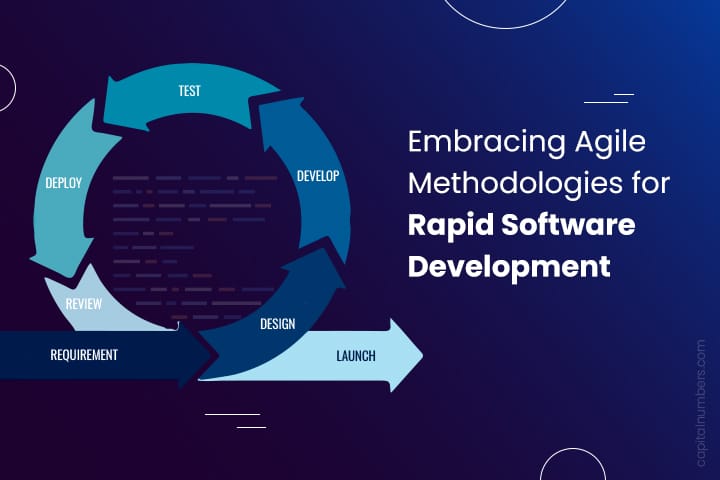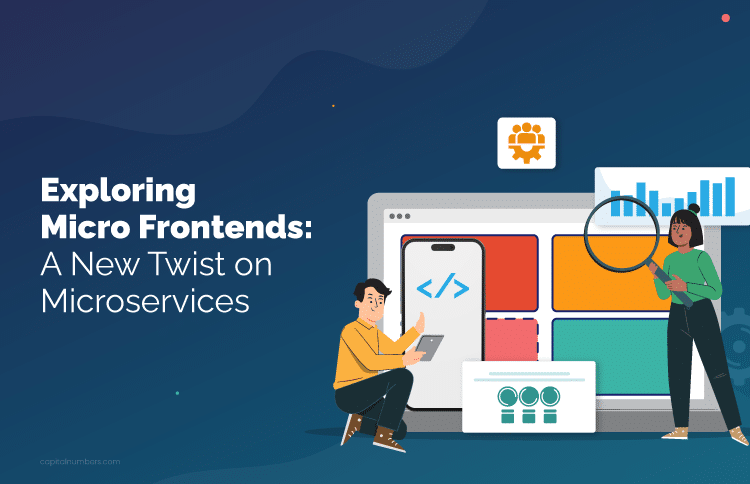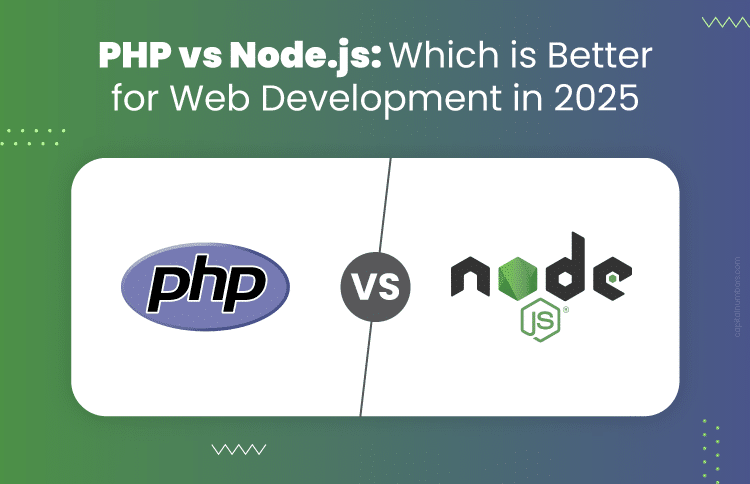Embracing Agile Methodologies for Rapid Software Development
Table of Contents
The software development landscape has undergone a seismic shift in recent years. Businesses are under relentless pressure to innovate faster, adapt to changing market dynamics, and deliver high-quality products with unprecedented speed. Traditional development methodologies, characterized by rigid planning and lengthy release cycles, are increasingly becoming obsolete. In response, Agile methodologies have emerged as a powerful paradigm, empowering organizations to accelerate development, enhance collaboration, and deliver exceptional value to customers.
This article delves into the core principles of Agile, explores its key frameworks, and examines how it has evolved in 2024. We will discuss the challenges and opportunities associated with Agile adoption, as well as provide practical guidance for organizations seeking to harness its full potential.
The Agile Manifesto: A Foundation for Change
At the heart of Agile lies the Agile Manifesto, a set of twelve principles that emphasize individuals and interactions over processes and tools, working software over comprehensive documentation, customer collaboration over contract negotiation, and responding to change over following a plan. These principles underscore the Agile philosophy of delivering value iteratively, fostering collaboration, and embracing change.
Core Agile Frameworks: Scrum, Kanban, and Beyond
While Agile is a broad umbrella term, several frameworks provide structured approaches to implementing its principles. Scrum, Kanban, and Extreme Programming (XP) are among the most popular:
- Scrum: This framework emphasizes iterative development, with teams working in short cycles called sprints. Scrum roles (Product Owner, Scrum Master, Development Team), artifacts (Product Backlog, Sprint Backlog, Sprint Goal), and ceremonies (Sprint Planning, Daily Scrum, Sprint Review, Sprint Retrospective) provide a structured approach to project management.
- Kanban: Focusing on visualizing workflow, Kanban helps teams identify and eliminate bottlenecks. It emphasizes continuous delivery and improvement through a pull-based system, where work is pulled from one stage to the next as capacity becomes available.
- Extreme Programming (XP): XP is a disciplined approach to software development that combines good engineering practices with a humanistic approach. Pair programming, test-driven development, and continuous integration are core XP practices.
While these frameworks offer distinct approaches, many organizations combine elements from different frameworks to create a hybrid methodology that best suits their needs.
Scrum: A Deep Dive
Scrum, a popular Agile framework, provides a structured approach to iterative and incremental software development. It emphasizes teamwork, accountability, and iterative progress within a cross-functional, self-organizing team.
The Scrum Framework
- Roles:
- Product Owner: Represents the voice of the customer, prioritizing the product backlog and ensuring the team delivers maximum business value.
- Scrum Master: Facilitates the Scrum process, removes impediments, and protects the team.
- Development Team: A self-organizing group of individuals responsible for delivering the product increment.
- Artifacts:
- Product Backlog: A prioritized list of product requirements or features.
- Sprint Backlog: A subset of the product backlog selected for development during a sprint.
- Sprint Goal: A clear objective for the sprint.
- Events:
- Sprint Planning: The team plans the work for the upcoming sprint, selecting items from the product backlog and creating the sprint backlog.
- Daily Scrum: A short daily meeting for the team to synchronize activities and plan work for the day.
- Sprint Review: A demonstration of the completed work to stakeholders.
- Sprint Retrospective: The team reflects on the past sprint and identifies improvements for the next.
Scrum Values
Scrum is built on five values: courage, focus, openness, respect, and commitment. These values guide the team’s behavior and interactions.
Scaling Scrum
As teams grow, scaling Scrum becomes necessary. Frameworks like Scaled Agile Framework (SAFe) and Large-Scale Scrum (LeSS) provide guidance for implementing Scrum at an enterprise level.
Agile in 2024: Evolution and Trends
The Agile landscape is continually evolving, with new trends and innovations emerging to address the challenges of modern software development.
- AI and Automation: Artificial intelligence (AI) is transforming Agile practices by automating routine tasks, improving decision-making, and enhancing collaboration. AI-powered tools can assist with planning, estimation, testing, and quality assurance. Automation of build, deployment, and testing processes accelerates delivery pipelines.
- Low-Code/No-Code Development: These platforms are democratizing software development, allowing business users to create applications with minimal coding. Agile principles can be applied to low-code/no-code projects to accelerate development and increase agility.
- Design Thinking and Agile Fusion: Design thinking emphasizes user-centricity and problem-solving. Integrating design thinking into Agile processes enhances innovation and customer satisfaction.
- Agile at Scale: As organizations grow, scaling Agile becomes increasingly complex. Frameworks like SAFe, LeSS, and Nexus provide guidance for implementing Agile at the enterprise level.
- Continuous Delivery and Deployment (CD/CD): Building on DevOps principles, CD/CD focuses on automating the software delivery pipeline to achieve faster time-to-market.
- Agile for Product Management: Product management is evolving with Agile, with product owners playing a pivotal role in driving product strategy and roadmap. Agile product management emphasizes market-driven development and continuous improvement.
- Agile in Marketing and Sales: Agile principles are being adopted by marketing and sales teams to improve campaign effectiveness, customer engagement, and sales productivity.
- Remote and Distributed Agile: The rise of remote work has necessitated adaptations to Agile methodologies. Tools and practices for virtual collaboration, such as video conferencing, project management software, and asynchronous communication, are essential for distributed Agile teams.
- Customer Centricity: Agile’s emphasis on customer collaboration has intensified. Organizations are leveraging customer feedback, analytics, and market trends to drive product development and deliver exceptional customer experiences.
You May Also Read: Adaptive Software Development: The Agile Approach for Modern Projects
Overcoming Challenges in Agile Adoption
While Agile offers numerous benefits, implementing it successfully can be challenging. Common hurdles include:
- Cultural Shift: Transitioning from a traditional, command-and-control culture to an Agile mindset requires significant change management efforts.
- Resistance to Change: Employees may resist new ways of working, fearing job insecurity or uncertainty. Lack of Management Support: Strong executive sponsorship is crucial for Agile success. Without top-down support, initiatives may falter.
- Measuring Success: Defining and tracking Agile metrics can be challenging. Organizations need to establish key performance indicators (KPIs) that align with Agile principles.
To overcome these challenges, organizations must invest in training, coaching, and leadership development. Creating a supportive environment, fostering open communication, and celebrating successes are essential for building a strong Agile culture.
Best Practices for Agile Success
To maximize the benefits of Agile, consider the following best practices:
- Start Small: Begin with a small, cross-functional team to experiment with Agile before scaling it across the organization.
- Focus on People: Invest in employee development, build strong teams, and foster a collaborative culture.
- Embrace Continuous Improvement: Regularly inspect and adapt processes to enhance efficiency and effectiveness.
- Leverage Automation: Automate repetitive tasks to free up time for value-added activities.
- Prioritize Customer Value: Keep the customer at the center of all decisions and focus on delivering value early and often.
Scrum-Specific Best Practices
- Effective Product Backlog Management: Prioritize the product backlog based on business value, and ensure it is clear, detailed, and actionable.
- Empowered Development Teams: Foster a self-organizing and cross-functional team culture.
- Continuous Improvement: Conduct regular retrospectives to identify and implement improvements.
- Transparent Communication: Ensure open and transparent communication within the team and with stakeholders.
- Focus on Delivering Value: Prioritize features that deliver the most business value.
Agile Implementation in Software & Application Development
Agile methodologies have proven to be highly effective in accelerating software and application development. By focusing on iterative development, collaboration, and customer satisfaction, Agile teams can deliver high-quality products faster.
Key Stages of Agile Implementation
- Project Initiation:
- Define project goals, scope, and objectives.
- Assemble a cross-functional team with diverse skill sets.
- Select an appropriate Agile framework (Scrum, Kanban, or hybrid).
- Establish clear communication channels and collaboration tools.
- Planning and Prioritization:
- Create a product backlog of prioritized features and requirements.
- Break down the product backlog into user stories.
- Estimate the effort required for each user story.
- Plan sprints or iterations with achievable goals.
- Development and Testing:
- Develop software incrementally in short iterations.
- Conduct continuous testing to ensure quality.
- Implement test-driven development (TDD) for robust code.
- Encourage pair programming for knowledge sharing and code quality.
- Continuous Integration and Deployment (CI/CD):
- Automate the build, test, and deployment process.
- Deploy software frequently to production environments.
- Monitor application performance and gather user feedback.
- Review and Adaptation:
- Conduct regular sprint reviews to demonstrate progress.
- Hold sprint retrospectives to identify improvement areas.
- Adapt the process based on feedback and lessons learned.
Challenges and Solutions
Agile implementation can face challenges such as resistance to change, difficulty in measuring progress, and managing dependencies. To overcome these obstacles, organizations can:
- Foster a culture of collaboration: Encourage open communication and teamwork.
- Provide adequate training: Equip teams with the necessary skills and knowledge.
- Establish clear roles and responsibilities: Define roles and expectations within the team.
- Use appropriate metrics: Track key performance indicators (KPIs) aligned with Agile goals.
- Involve stakeholders: Ensure stakeholders are engaged and involved in the process.
Benefits of Agile in Software & Application Development
- Faster time-to-market
- Improved product quality
- Increased customer satisfaction
- Enhanced flexibility and adaptability
- Stronger collaboration and teamwork
- Reduced project risks
- Higher employee morale
By effectively implementing Agile methodologies, organizations can significantly improve their software and application development capabilities, delivering innovative solutions that meet customer needs.
Case Study: Spotify’s Agile Transformation
Spotify, a global leader in music streaming, provides an excellent example of successful Agile adoption. The company faced challenges in scaling its development processes to meet the demands of rapid growth and increasing user base.
To address these challenges, Spotify embraced Agile principles and implemented a unique approach called “Squads, Tribes, and Chapters.” This model involves small, autonomous teams (squads) working on specific features, grouped into larger units (tribes) aligned with business objectives. Chapters bring together individuals with similar skills across different squads.
By adopting this Agile framework, Spotify achieved significant improvements in:
- Product development speed: The company was able to release new features and enhancements rapidly, meeting user demands.
- Employee satisfaction: The autonomous and empowered teams fostered a high level of employee engagement and creativity.
- Scalability: The squad, tribe, and chapter model enabled the company to scale its development efforts effectively.
- Innovation: The Agile culture encouraged experimentation and continuous improvement.
Spotify’s success story highlights the transformative impact of Agile on a large-scale software development organization.
Case Study: Amazon’s Focus on Customer Obsession
Amazon, a global e-commerce giant, has successfully leveraged Agile principles to drive innovation and customer satisfaction. The company’s relentless focus on customer obsession aligns perfectly with Agile’s emphasis on delivering value to customers.
Amazon’s Agile approach involves:
- Small, autonomous teams: Empowering teams to make decisions and respond quickly to customer needs.
- Continuous experimentation: Encouraging innovation and learning from failures.
- Data-driven decision making: Using customer data to inform product development and improvement.
- Rapid iteration: Continuously releasing new features and updates based on customer feedback.
By adopting Agile practices, Amazon has achieved significant growth and market leadership, demonstrating the power of customer-centric Agile development.
Case Study: Zomato’s Agile Journey
Zomato, a food delivery and restaurant discovery platform, has successfully adopted Agile principles to enhance its user experience and expand its market reach. The company faced challenges in managing a complex ecosystem of restaurants, delivery partners, and customers.
To overcome these challenges, Zomato implemented Agile practices to:
- Improve delivery time: By breaking down development into smaller iterations, Zomato reduced delivery times and improved customer satisfaction.
- Enhance user experience: Agile development enabled the company to quickly test and iterate on new features based on user feedback.
- Scale operations: Zomato successfully scaled its operations by adopting Agile at scale frameworks to manage multiple teams and projects.
By embracing Agile, Zomato has become a leading player in the food delivery industry, demonstrating the effectiveness of Agile in a fast-paced, customer-centric environment.
You May Also Read: Agile Strategies for Fixed-Cost Web Development Projects
Conclusion
Agile has become a cornerstone of successful software and application development. By understanding the core principles, adopting appropriate frameworks, and overcoming challenges, organizations can harness the full potential of Agile to achieve their business objectives.
The case studies of Spotify, Amazon and Zomato collectively demonstrate the diverse and impactful applications of Agile methodologies across various industries. These companies have achieved remarkable success by embracing Agile principles and adapting them to their specific business needs.
By carefully analyzing these case studies and applying the lessons learned, organizations can embark on their own Agile transformations and reap the benefits of increased efficiency, innovation, and customer satisfaction.
















